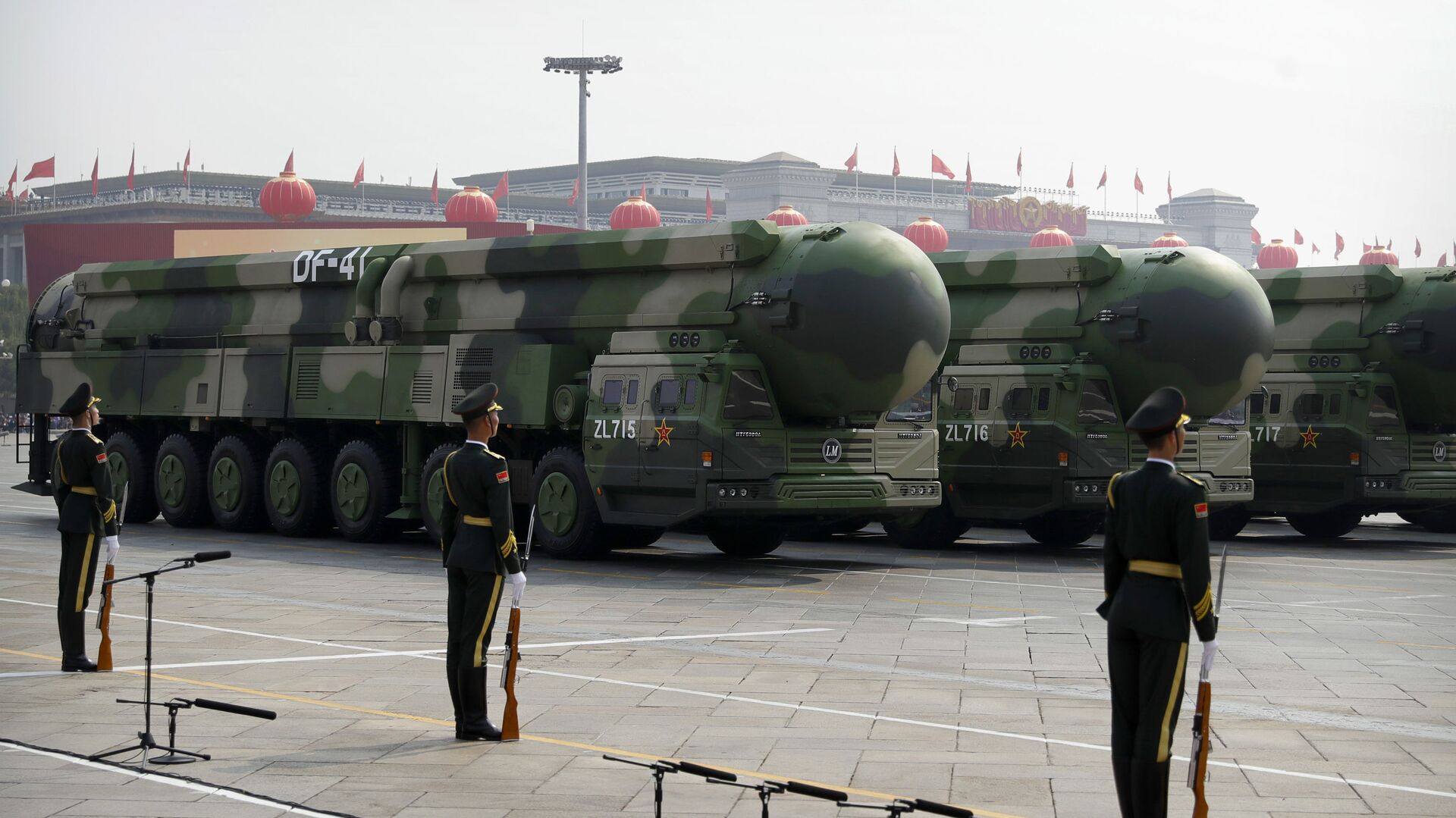US Experts Claim ‘Significant Expansion of Chinese Nuclear Arsenal’ On Reports of Silo Construction

© AP Photo / Mark Schiefelbein
Subscribe
Commercial satellite images obtained by researchers at the James Martin Center for Nonproliferation Studies in early July prompted US experts to suggest China had begun constructing over 100 new silos for intercontinental ballistic missiles near the city of Yumen as part of a “building spree” to expand Beijing’s nuclear capabilities.
China is reportedly constructing a network of nuclear silos in the country's remote eastern Xinjiang province, according to data provided by the Federation of American Scientists (FAS).
Nuclear experts from the non-profit global think tank who studied satellite images of the network grid from geospatial data company Planet Labs suggested that construction may have started this March.
At least 14 silos were ostensibly discovered, with an area cleared for construction of potentially another 19.
Altogether, up to 110 silos could be housed in the area in the desert, claim the scientists, adding that the underground silos are typically used to house Intercontinental Ballistic Missiles (ICBMs) designed for nuclear weapons delivery.
Altogether, up to 110 silos could be housed in the area in the desert, claim the scientists, adding that the underground silos are typically used to house Intercontinental Ballistic Missiles (ICBMs) designed for nuclear weapons delivery.
FAS researchers Matt Korda and Hans M. Kristensen wrote in their study that "Chinese ICBMs could potentially carry more than 875 warheads (assuming three warheads per missile) when the Yumen and Hami missile silo fields are completed," up from the existing approximate 185 warheads it has. The FAS study underscored:
"The silo construction at Yumen and Hami constitutes the most significant expansion of the Chinese nuclear arsenal ever."
This is reportedly the second such field discovered via commercial satellite images in recent weeks. Last month 119 silos under construction were revealed near Yumen in China's northwest Gansu province, according to a report in The Washington Post, citing satellite images from the James Martin Center for Nonproliferation Studies at Monterey.
中国が大陸間弾道ミサイル用のサイロを建設していると思われる119の建設現場を、商業衛星画像を用いた研究者が発見しました。画像には場所が示されています。(Planet/Center for Nonproliferation Studies) https://t.co/WOKMW2McPv
— 弦巻太郎 (@Gen_Makitaro) July 1, 2021
In response to the report in The Post, Chinese nuclear experts dismissed the claims of a nuclear base under construction. Song Zhongping, a former People's Liberation Army instructor, was cited by the South China Morning Post as suggesting nuclear silos are outdated.
"China has already used mobile launchers and discarded these fixed silos, which are time-consuming, labor-intensive, costly and vulnerable to be attacked and destroyed," said Song.
Kristensen, director of the Nuclear Information Project at the FAS, was quoted by the Insider as acknowledging that stationary silos are vulnerable to attack. However, he added that a "solution" to the issue for Chine could be to "build a missile that can react fast enough to get out of the silo before it is destroyed."
"Today, some of the most modern missiles are actually deployed in silos, so it is by no means considered old," the outlet cited Kristensen as saying.
Beijing is apparently developing the capability of launching advanced intercontinental ballistic missiles (ICBMs) from underground silos to swiftly retaliate against a possible nuclear attack, the AP news agency cited Hans Kristensen as saying in March this year.
The claims came after similar analysis of a spate of commercial satellite photos, which prompted the expert to assume that at least 16 underground silos at a huge missile training range near Jilantai in the country's north-central area were under construction.
These silos add to the 20 that China already operates with an older ICBM, the DF-5, Kristensen was cited as adding, elaborating that "it would only constitute a fraction of the number of ICBM silos operated by the United States and Russia".
According to him, the images indicate that China was looking to counter what it may perceive as an increasing threat from the US. The Pentagon had argued in its annual report on Chinese military developments last summer that Beijing intended to enhance capability of its nuclear forces by placing more ICBMs in underground silos.
"The PRC's nuclear weapons policy prioritises the maintenance of a nuclear force able to survive a first strike and respond with sufficient strength to inflict unacceptable damage on an enemy", the report asserted.
There are conflicting reports about the exact number of nuclear warheads China possesses. Some assessments put the figure at about 290, while a report by the Bulletin of Atomic Scientists suggested a Beijing stockpile of 350 nukes.
Last year, China said it had no intention to join the Russia-US talks on the future of the New Strategic Arms Reduction Treaty (START), arguing that it only has a fraction of the nuclear arsenals wielded by Moscow and Washington.

